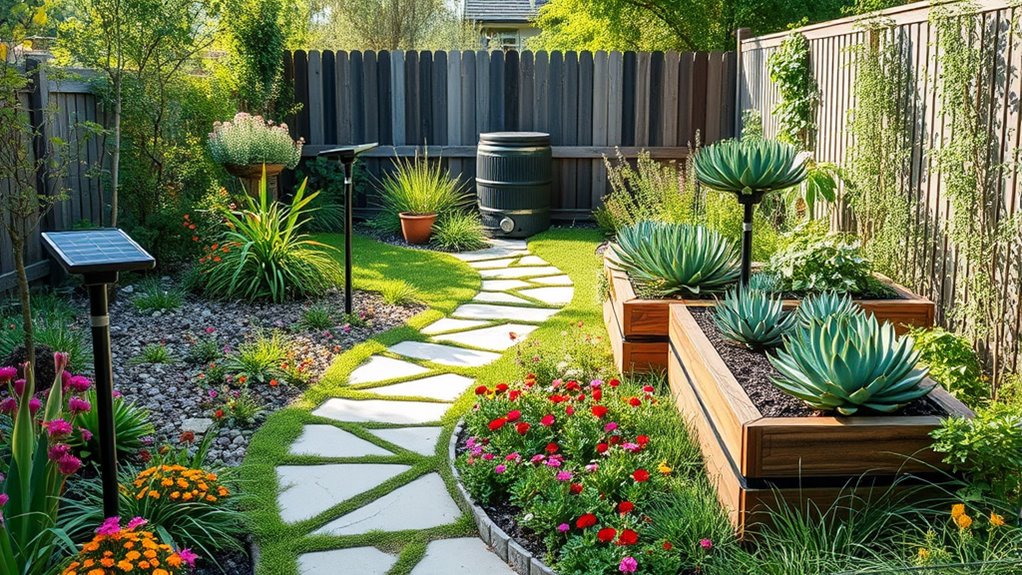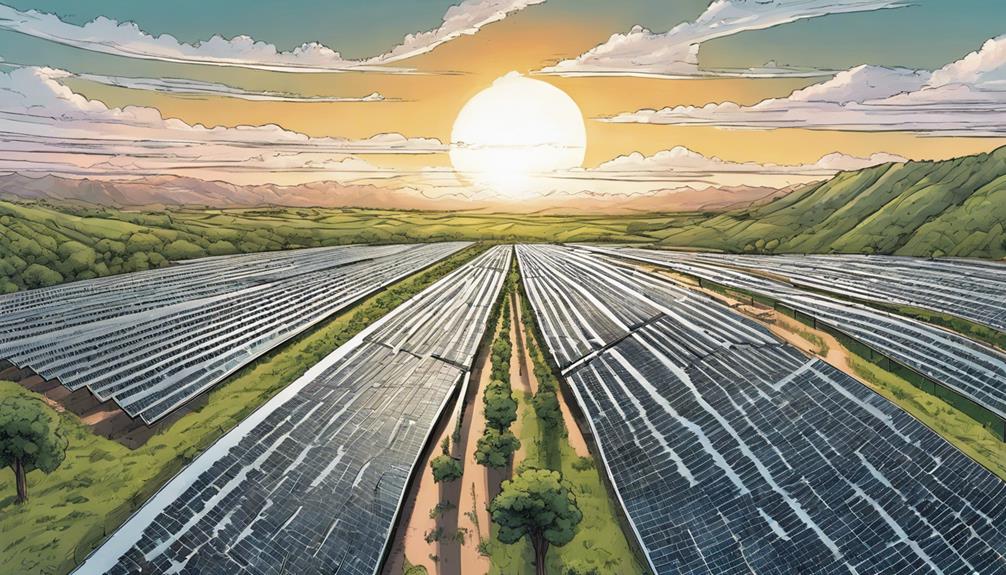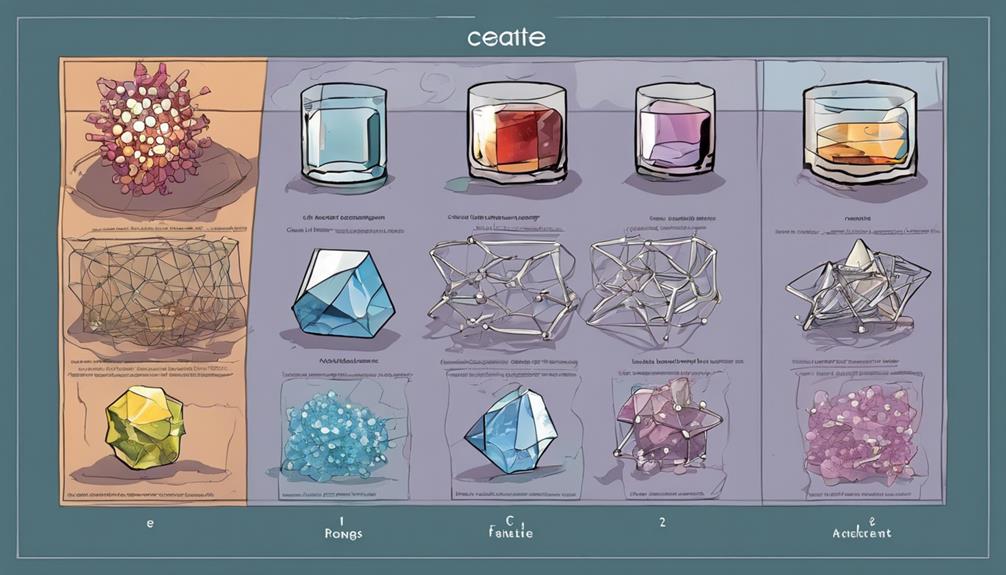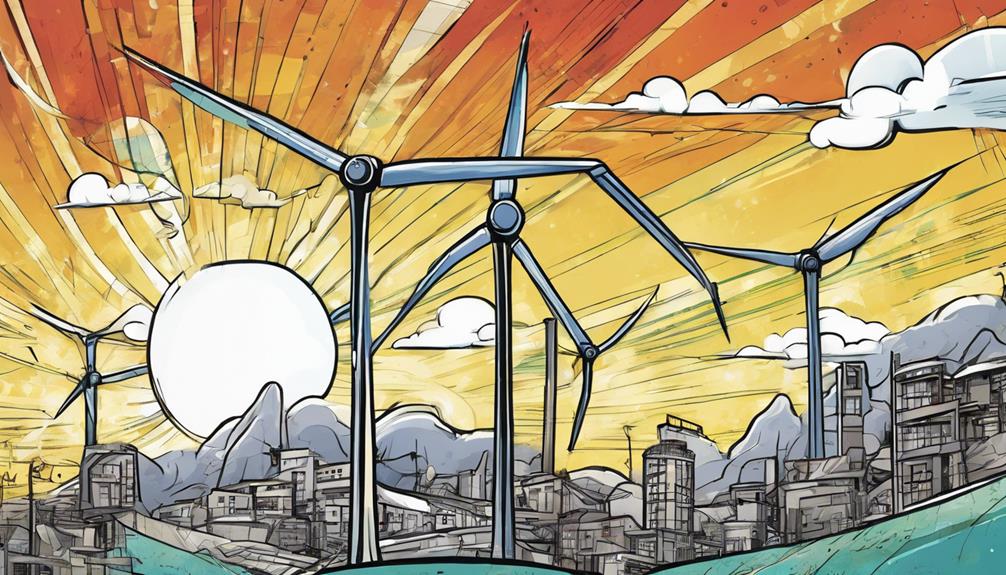Switching from traditional lawns to native grasses and sustainable landscaping can greatly reduce water use, chemical runoff, and maintenance effort. By choosing drought-tolerant native plants, you conserve resources and support local ecosystems. Incorporate smart irrigation and composting to further enhance eco-friendly practices. Using eco-tools and minimizing chemical pesticides help protect the environment. Want to discover more simple ways to create a greener yard? Keep exploring for practical tips that make a difference.
Key Takeaways
- Replace traditional lawns with native grasses to reduce water, fertilizer, and pesticide use while supporting local wildlife.
- Implement water-efficient irrigation systems and drought-tolerant plants to conserve water and minimize runoff.
- Use composting techniques to recycle yard waste and enrich soil naturally, decreasing chemical dependencies.
- Choose eco-friendly tools like battery-powered or manual equipment to lower emissions and energy consumption.
- Incorporate sustainable landscaping practices that promote biodiversity, resilience, and minimal maintenance.
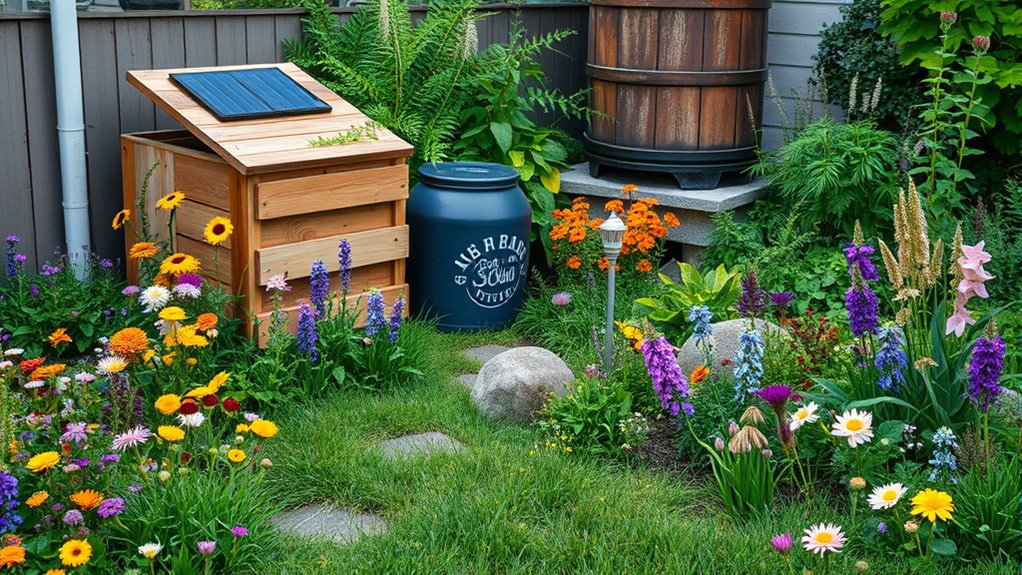
Are you looking for ways to keep your yard healthy while protecting the environment? Embracing eco-friendly yard care means shifting away from traditional lawns and exploring sustainable alternatives that benefit both your property and the planet. One effective way to do this is by incorporating native grasses into your landscape. Native grasses are perfectly adapted to your local climate and soil conditions, requiring less water, fertilizers, and pesticides. They grow robustly without needing extensive maintenance, helping you conserve resources and reduce chemical runoff that can harm nearby waterways. Plus, native grasses provide essential habitat for local wildlife, supporting bees, butterflies, and birds. Establishing a native grass area is straightforward: choose species suited to your region, prepare the soil by removing invasive plants, and sow the seeds or plant plugs during the appropriate season. Once established, native grasses need minimal mowing, usually just once or twice a year, which cuts down on emissions from lawn equipment and saves you time. Using native grasses also helps enhance biodiversity and resilience of your landscape against pests and climate extremes. Incorporating drought-tolerant plants into your yard can further reduce water usage and improve overall sustainability. Additionally, smart home automation solutions can optimize irrigation systems, ensuring efficient water use and minimizing waste. Implementing payment processing solutions can streamline the management of eco-friendly landscaping services, making it easier for you to schedule and pay for professional care. Another cornerstone of eco-friendly yard care is adopting effective composting techniques. Composting turns yard waste and kitchen scraps into rich, organic soil that nurtures your garden naturally. Instead of sending leaves, grass clippings, and food scraps to the landfill, you can create a compost pile or bin in your yard. This process reduces methane emissions from organic waste decomposition in landfills and produces a valuable soil amendment. To maximize compost quality, layer browns like dried leaves and straw with greens such as grass clippings and vegetable scraps, maintaining a balance of carbon and nitrogen. Regularly turning or aerating your compost encourages microbial activity, speeding up decomposition and ensuring nutrient-rich humus for your plants. Using compost in your garden reduces the need for synthetic fertilizers, which can leach into groundwater and harm ecosystems. It also improves soil structure, promoting healthy root growth for native grasses and other plants. Additionally, selecting eco-friendly lawn care tools, such as battery-powered or manual equipment, can further reduce your environmental footprint.
Frequently Asked Questions
How Can I Attract Native Pollinators to My Yard?
To attract native pollinators to your yard, start by planting pollinator-friendly plants that provide nectar and pollen. Incorporate native bee habitats like bee hotels or undisturbed soil patches, giving pollinators safe nesting sites. Avoid pesticides, and create diverse plantings that bloom throughout the season. By doing this, you support native bees and other pollinators, helping boost local biodiversity while making your yard vibrant and lively.
What Are the Best Drought-Resistant Plants for My Climate?
Imagine a yard that thrives with minimal water, where native plant selection boosts your landscape’s beauty. You can choose drought-resistant plants that match your climate adaptability, ensuring they withstand dry spells and flourish naturally. Think hardy succulents, drought-tolerant grasses, and resilient shrubs. By selecting plants suited to your local conditions, you create a sustainable, low-maintenance garden that conserves water while enhancing your outdoor space’s charm.
How Do I Compost Effectively in Small Outdoor Spaces?
To compost effectively in small outdoor spaces, start with a compact compost bin suited for limited areas. Add a mix of green and brown materials to promote soil enrichment, turning it regularly to aerate and speed up decomposition. Keep the compost moist, but not wet. This way, you’ll create nutrient-rich compost that boosts your garden’s health without taking up much space, making your yard sustainable and eco-friendly.
Are There Eco-Friendly Alternatives to Chemical Fertilizers?
You’re wondering about eco-friendly alternatives to chemical fertilizers. You can use organic amendments like compost, manure, or seaweed to nourish your plants naturally. These options improve soil health and reduce chemical runoff. Additionally, practicing natural pest control methods, such as introducing beneficial insects or using neem oil, helps protect your yard without harmful chemicals. This approach not only supports a healthy environment but also keeps your garden thriving sustainably.
How Can I Reduce Water Usage in Yard Maintenance?
Imagine your yard as a giant sponge soaking up every drop of rain. To cut water use, you can install rainwater harvesting systems to collect runoff and use it for your plants. Pair that with drip irrigation, which delivers water directly to roots, minimizing waste. This way, you’re conserving water, saving money, and making your yard a shining example of eco-friendly genius—no overwatering required!
Conclusion
By choosing sustainable yard care methods, you not only protect the environment but also create a beautiful, healthy outdoor space. Imagine replacing your traditional lawn with native plants that require less water and fertilizers. For example, Sarah transformed her yard into a native plant sanctuary, reducing water use by 50% and attracting pollinators. Small changes like these make a big difference—so start exploring eco-friendly options today and enjoy a greener, more sustainable yard.
